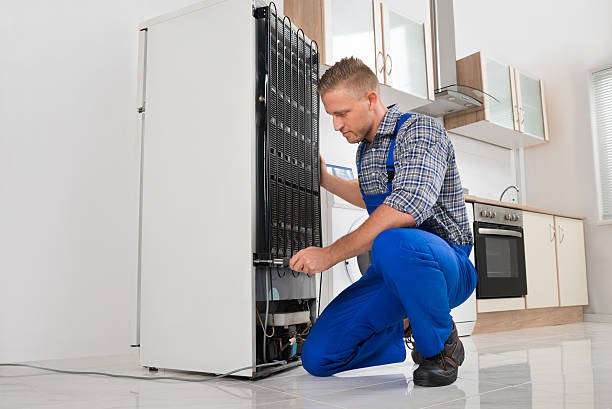
Gas leaks in fridges and freezers are a common household issue that can lead to serious consequences if not addressed promptly. The leakage of refrigerant gas, which is used for cooling, may cause the appliance to malfunction or even pose health hazards. Therefore, it’s crucial to know how to detect and fix these leaks safely.
Detecting a gas leak in your fridge or freezer can be quite challenging as the refrigerant gas is usually odorless. However, there are some telltale signs that you should look out for. If your fridge or freezer isn’t cooling properly despite being at the right temperature setting, it could indicate a potential leak. Another sign is hearing hissing noises from your appliance when it’s running; this could be due to gas escaping from a hole or crack.
Other indications include excessive frost build-up inside the freezer compartment and an unexplained increase in energy consumption. If you notice any of these signs, it’s advisable to call a professional technician immediately instead of trying DIY methods which might worsen the problem or put you at risk.
However, if you’re confident about handling minor repairs yourself, there are safe ways to detect small leaks using soapy water solution. First, disconnect the power supply before starting any work on your refrigerator or freezer. Prepare a mixture of dish soap and water then apply this solution around pipe joints using a spray bottle or sponge.
If there’s indeed a leak present; bubbles will form due to reaction with escaping gas when the appliance resumes operation after reconnecting power supply temporarily just for testing purpose only without storing food items inside during this period.
Once detected; fixing such leaks requires technical skills and specific tools like brazing torches along with protective gears because working with refrigerants can be dangerous due its chemical properties causing skin irritation on contact or breathing difficulties if inhaled directly.
Small holes can often be repaired by soldering but larger ones might need replacement parts entirely like tubes where refrigerant circulates. Always remember to evacuate the remaining refrigerant gas before starting repairs, and once done, it needs to be refilled with correct amount according to manufacturer’s specifications.
The best prevention method for gas leaks is regular maintenance of your fridge or freezer. This includes cleaning condenser coils, checking door seals for wear and tear, and ensuring proper ventilation around the appliance. If you notice any unusual changes in its performance or operation, don’t hesitate to contact a professional technician.
In conclusion; detecting Gas leaks in fridges and freezers requires careful attention along with certain technical skills. While some minor issues can be addressed by homeowners themselves safely following right procedures; others should always be left in hands of professionals due their complexity involving potential risks if not handled correctly. Regular maintenance is key towards preventing such problems from occurring while ensuring longer lifespan for these essential household appliances.
